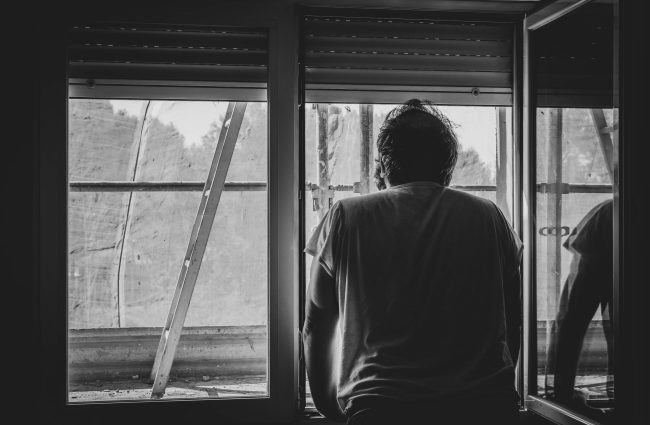In reflection, over the past two decades, the global human population has witnessed three novel coronaviruses emerge and cause outbreaks with considerable health consternation. Further, all outbreaks (likely) have a zoonotic origin, or, diseases that spread from animals to humans. The question begs to be asked: Why?
III.
Scientists who study how diseases emerge have been sounding the alarm of an impending global pandemic for the past few decades. As the 20th century closed, the number of emerging infectious diseases that spread to people – especially respiratory illnesses of zoonotic origin – has dramatically increased. Thousands of diseases in the world are buried deep in the wild, that can make the jump to our very own species. The tragedy of this pandemic is likely caused by the very real tragedy befalling the natural world – we are losing our planet’s wild spaces.
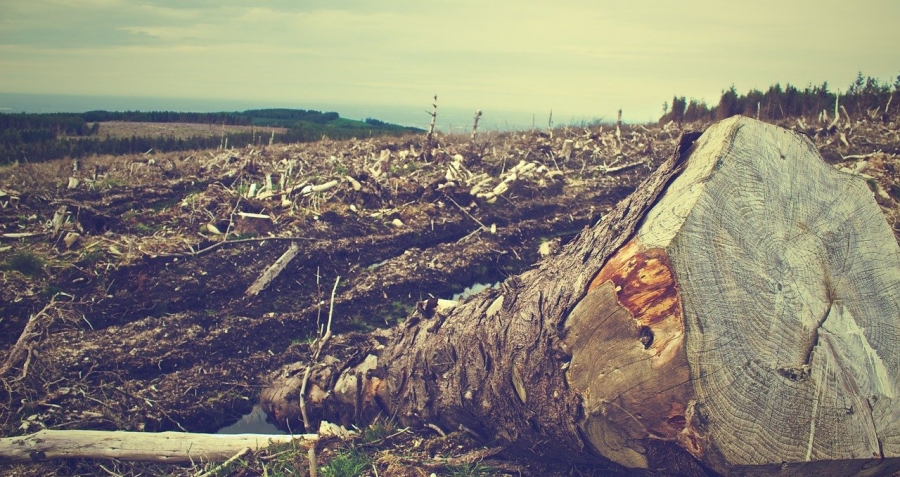
Biodiversity, the variety of life in a habitat or ecosystem, is diminished when forests are logged for roads, railways, and other forms of infrastructure. As biodiversity declines, mixed ecosystems become increasingly monocultural – where single crops replace natural diversity. With this loss of both species and genetic diversity, the risk of spreading infectious disease to human civilization increases. Kate Jones, an ecological modeler at the University College London, recently published a study in Nature (“Zoonotic host diversity increases in human dominated ecosystems” – August 2020) that investigated the links between biodiversity and emerging diseases. The analysis of close to 6,800 ecological communities across six continents adds to an ever-growing body of scientific evidence that connects human development, industrialization, and biodiversity loss to disease outbreaks. The study finds infectious diseases emerge in this development pattern as increased contact between humans, wildlife, and livestock is experienced. This occurs as folks move into previously undeveloped areas. Jones notes these interactions happen more frequently on the frontiers of human expansion.
Changes to the natural landscape provide an opportunity for increased encounters with wild animals. This is notable and important, as Jones’ work, and the work of others, suggests that the very decline in biodiversity itself, caused by human expansion into the natural world, increases the pool of pathogens that can jump from other animals to our own species. This “pathogen pool” increases because a loss in biodiversity usually results in a few species replacing many. These highly adaptable species, small mammals such as rats and bats, for example, tend to be the ones hosting pathogens that can spread to humans. This lesson should be front and center as the pandemic marches on: To protect ourselves, we have to protect wild places.
IV.
Katie and Eli, thankfully, never demonstrated any Covid symptoms. As Katie tested negative, and Eli was symptom free, we agreed that I should self-isolate in Eli’s bedroom. In our small home, we could simply close a hall door and I’d have his room and a hall bathroom to myself.
The ceiling fan just hummed and went round and round and round. The blades cast a shadow across the ceiling in the pale light of early morning. I don’t know how long I laid there until I noticed that tranquil light. I must have been in and out of a groggy sleep for twenty hours or so. I smiled to myself looking around Eli’s room. A mosaic of superhero posters, other comic book art, science fiction fan favorites, and various Volunteer knick-knacks decorated the space. A model of the Ghostbusters car, Ecto-1, the famed heroes’ headquarters, a Slimer, and Stay Puft the Marshmallow Man, all sat on the custom desk his Pop built him. I rested on sheets decorated with planets, the sun, other stars, and rocket ships. I remember looking out the window to admire the sky’s pre-dawn blue glow. Through the dogwood trees in our front yard, clouds looked long and thin. I don’t know how long I laid there until I fell back asleep.
V.
My Covid symptoms progressed rather quickly. I slept an incredible amount the first few days after my diagnosis until the fatigue finally gave way. Once I started coughing, I’d go on a long deep fit – a consequence, likely, of all those cigarettes I used to smoke in my early twenties. The cough sounded rather concerning – dry and barking, like a seal gasping for air. The cough never worried me though. Luckily, I was never short of breath. Odd and intense muscle aches and spasms came and went for a few days, as did a low-grade fever.

The oddest symptom I encountered was how the disease affected my brain. No headaches to speak of, but instead a sensation that a fluffy cloud was living inside my head – a weird kind of fog that just left me feeling uneasy, unfocused, and strange. All of this said, as my sleep schedule became normal again, on day four of my quarantine I fell asleep and awoke on day five of my quarantine with my symptoms alleviated – gone in a dream. Once my health improved, however, stagnation and emptiness set in.
I was suddenly awake my usual eighteen or so hours a day. I did like Eli’s room, small as it was. Two windows, one draped by the Tennessee state flag, allowed me to watch the days and nights roll by in our Old Sevier neighborhood the next couple of days. I could tell from the air-conditioned space that August was progressing hot and humid outdoors. I could still hear the insects in stridulation. I could still enjoy the songs of birds. I even found some comfort in my neighbors going about their business. All the Quentin Tarantino movies I watched and video games I played were helpful as well, of course. That said, overall, I was joyless, aimless, and worried. I had two symptomless days to go before I could safely rejoin my family – and I could tell my wife felt the weight of it all.
During all my slumber in those first few Covid days, Katie was under an incredible amount of stress. She took care of all household chores and provided the sole emotional support to Eli. He was worried about me and his emotions spilled to his mom. Knowing his active, usually vibrant dad was down for the count with “the virus” was a great cause of anxiety and worry for the six-year-old. Katie was burdened with all this while I slept the hours away.
Further, my wife was sad on a personal level. She’d planned on completing the GVRAT on her 40th birthday by strolling a few blocks to our favorite neighborhood bar, the South Knoxville Trailhead, then crossing the “finish line” on the patio. We’d arranged to celebrate outdoors with select friends, drinks, and pizza. Instead, she spent the milestone birthday in quarantine. She was averaging five miles a day but lost two weeks of walking to quarantine and was seventy miles behind schedule.
VI.
The whole family broke out of quarantine on Sunday, August 16th. We rolled out of bed, picked up breakfast biscuits, and headed to Seven Islands State Birding Park along the French Broad River in Knox County. The peninsula, full of aquatic and grassland habitats, and more than 190 species of birds, is a favorite place of ours. Along the rolling hills, meadow grasses, and flowering riverbanks, Eli ran and we walked with smiles and relief.
Since that day, Katie and I kicked off another fall semester at Pellissippi State and Eli started elementary school. Lots of big changes for the family – August sure is rounding out to be a pendulum swing of a month. As I’m writing this, today is Saturday, August 22nd. Katie has some ground to make up for GVRAT, so she is off with our friend Casey on a long adventure. Works well; I am in need of some quality father and son time. I’ve been coming to the Chimneys picnic area with my own parents since I was a kid. There’s something special about this little niche – reminds me of the Forest Moon of Endor.
With our breakfast (grilled cheese sandwiches and chocolate doughnuts) devoured, I’ve found myself in the very waters of the Pigeon River. Boulders are erratically strewn about the sun-bathed water – perfect for climbing and hopping about. Eli takes to the activity naturally. Feeling free, like a child again myself, I play with my boy as the river splashes and moves along the trees. Curving gently through the forest, with pools, eddies, and torrent all at once, the river travels as we hop happily from rock to rock. The water sparkles like glitter, disturbed only when struck by our skipping stones. Enveloping everything is the earthy, musty aroma of the forest. After a while, we just sit for a spell.
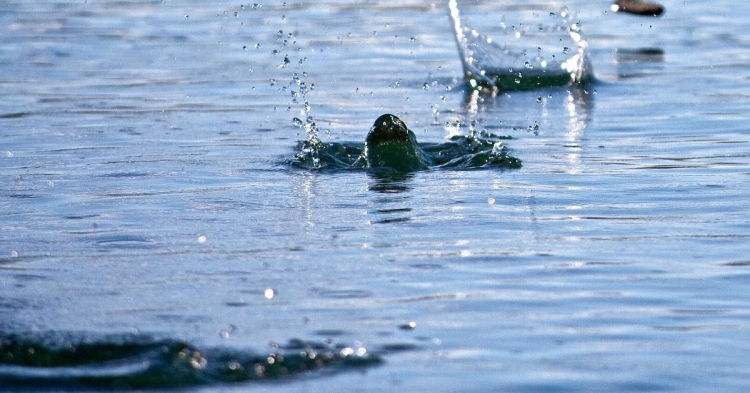
“Hey, Bubba,” I pipe as I toss another skipping stone into the water, “there’s a guided nature trail on the other side of the picnic area. Want to go for a walk?”
“Sure.” With the agreeable reply, we carefully begin our way back across the boulders to our picnic area.
The sun has picked up in intensity, but our day is still enjoyable enough. I stop at our family wagon and remove my long-sleeved tee shirt and pack up our gear. The popular spot is much busier now, with folks and chatter buzzing around everywhere. One of the cool things about this spot is folks come for hours. Some will perhaps spend their whole day here cooking, eating, playing, and relaxing. I reckon this is true of other picnic areas, but the Chimneys seem more festive than other spots in the park.
We wave to folks and mind our p’s and q’s as we make our way to the guided nature walk. I donate a dollar to the park and pick-up a self-guiding nature trail brochure.
“Hey, buddy,” I call, grabbing Eli’s attention, “this is a guided nature trail. You reckon you can help me find the trail markers?”
The boy grins from ear to ear. “You mean like a scavenger hunt?”
I chuckle my reply, “Yeah bro, just like a scavenger hunt – or perhaps more like a treasure hunt?”
“What’s the difference?”
“Not really sure I know, dude. But I reckon there’s a difference.”
We chat this way for a good little bit – so much so that we miss the first few stops along the trail. No bother, though, it’s good to spend some time with my son. Our conversation stops, however, as the elevation shifts. We’ve suddenly found ourselves along a steeper section of the trail. The gain isn’t too bad, to be sure, but it’s enough to get the heart beating. A soft break in the forest grants a good spot for a breather, and, as a bonus, a rather good view of the greater Appalachian Mountain range off in the distance. Incredible to know that these timeless portals of rock and soil have been hospitable to life for millions of years. The forest is a reminder that our Earth is ever changing, that our climate is ever changing, and that life itself is ever changing.
Hell, this very cove forest, consisting of beech, maple, white pine, hemlock, yellow-birch, and more, recalls the past ice-age climates of an evolving continent. These varieties of trees often form their own forests across North America, but here, in the Great Smoky Mountains, they exist together at an elevation suitable to a climate gone elsewhere – a million years of life, generations upon altering generations, still exist in this special time and space.
Isn’t 2020 a great year for reflections about time? When this pandemic started, we had ourselves a five-year-old kindergartner – now we’ve a six-year-old first grader. How much longer will this eeriness last?
My internal monologue is interrupted as Eli spots a marker along the path.
“Hey, Dad! Dad! I see number three!” With an excited squeal Eli runs to the marker.
I open the pamphlet and begin to read:
Yes, you are standing in an old corn field. In the world of nature there is no vacuum. The forest around you is not static. It is vibrant, changing with the seasons and interacting with all the elements in the web of life – the air, soil, sun, water, producers, consumers, decomposers. . .
Standing in sections of forest as thick as this one, it’s easy to forget that before earning national park status, this wild refuge was under human control. Early in the 20th century, ‘round about seventy-five families lived here in the Sugarlands Valley – and they all mixed their labor with the land. According to our pamphlet, a local family grew corn and potatoes here in this spot – here in this spot. Our clues were the stacked piles of rock and the tulip poplars that only grow on sunny, open ground.
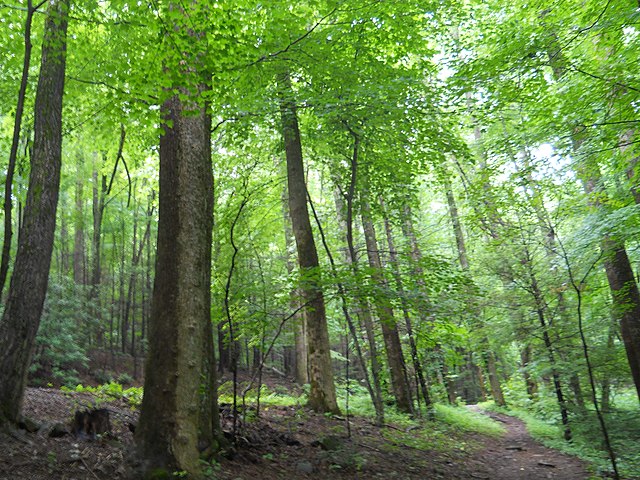
We move onward and come to a section of trail that had been logged in the early 1900s. Again, reading the pamphlet to Eli, we both learn heavy industrial logging did not occur here, but, rather, sawmills cut choice trees from small areas so the site could be continually revisited. Looking around, we see small and medium trees, and much larger old-growth titans that survived loggers.
The boy and I will spend a good hour or so walking around this trail just reading, learning, and spending free, liberated time with one another. I reckon the geologist in me likes to think about time – especially in the mountains, especially as a father, especially after the strangeness of quarantine.
This is one of those good days, making good memories. Time is so precious, so fleeting, but so long, all at the same, well, time. We’ve turned a corner on the trail and entered an untouched forest – the old growth trees are now widely spaced as their giant root system take nutrients that slow the growth of shrubs and other understory plants. Here, we walk along rocks and boulders that probably moved down this slope some 12,000 years ago. Back then, the climate was freezing and thawing as great ice-sheets advanced and retreated across North America. This “freeze-thaw” would break up rocks at higher elevations. As a result, they’d erode downslope. Today, these ice-age rocks lay in a much warmer global environment, but the Southern Appalachians still provide a relatively cool, temperate atmosphere with heavy rains.
Time humbles a person. On such a short loop, the boy and I have explored an ecosystem that’s actively reclaiming farmland, recovering from small-scale logging, hosts boulders and rock that tell signs of past ice-age climates – and offers the knowledge and thoughtful notion that the mountains will not remember us. At the end of the loop, we find ourselves looking at that old cornfield from a different vantage point.
“Dad, look – it’s spot 17.”
“Sure is, dude. Last stop.” I fish the pamphlet from my back pocket and read a bit about the next generation of forest: “. . . Perhaps in another 100 to 200 years the cycle from virgin forest to farm and back to mature cove hardwoods will be complete.”
Seasons will change, time will keep moving forward. Any disturbance to the natural world will be reclaimed by ecological succession. Our actions, though, have consequences. To protect the wild, to safeguard biodiversity, is to protect and safeguard ourselves. I do feel out of some past life – our pre-pandemic days. Do we have enough time not only to protect, but also to regenerate more spaces like these – or will our time here vanish like the old farm?
VII.
The belt of our treadmill just hums along. Katie’s feet move softly and methodically as tears swell in her eyes and stain her face. In our musty basement space, the humidity is all-encompassing as sweat pours from this beautiful woman.
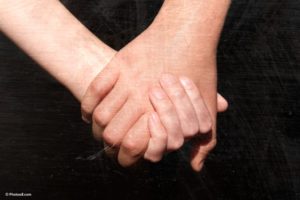
We finally had our Knoxville urban adventure. We walked all weekend long as Eli took a needed visit with grandparents. We walked to our favorite patios, through our favorite neighborhoods – the Old City, Down-Town, all across the communities of South and North Knoxville. We slept for a few hours, then went back at it again, even walked all over the University of Tennessee after midnight on Saturday, August 29th. We didn’t stop walking that morning until about 3:00. In this last weekend of her birth month, Katie covered 73 miles. Even with this final push, she knew she would not catch the buzzard – she just wanted to get as close as possible. I could only hold her hand in silence on this last August night. She wept and continued walking as the clock struck midnight. With only 56 miles left to go, September washed the GVRAT race away.
